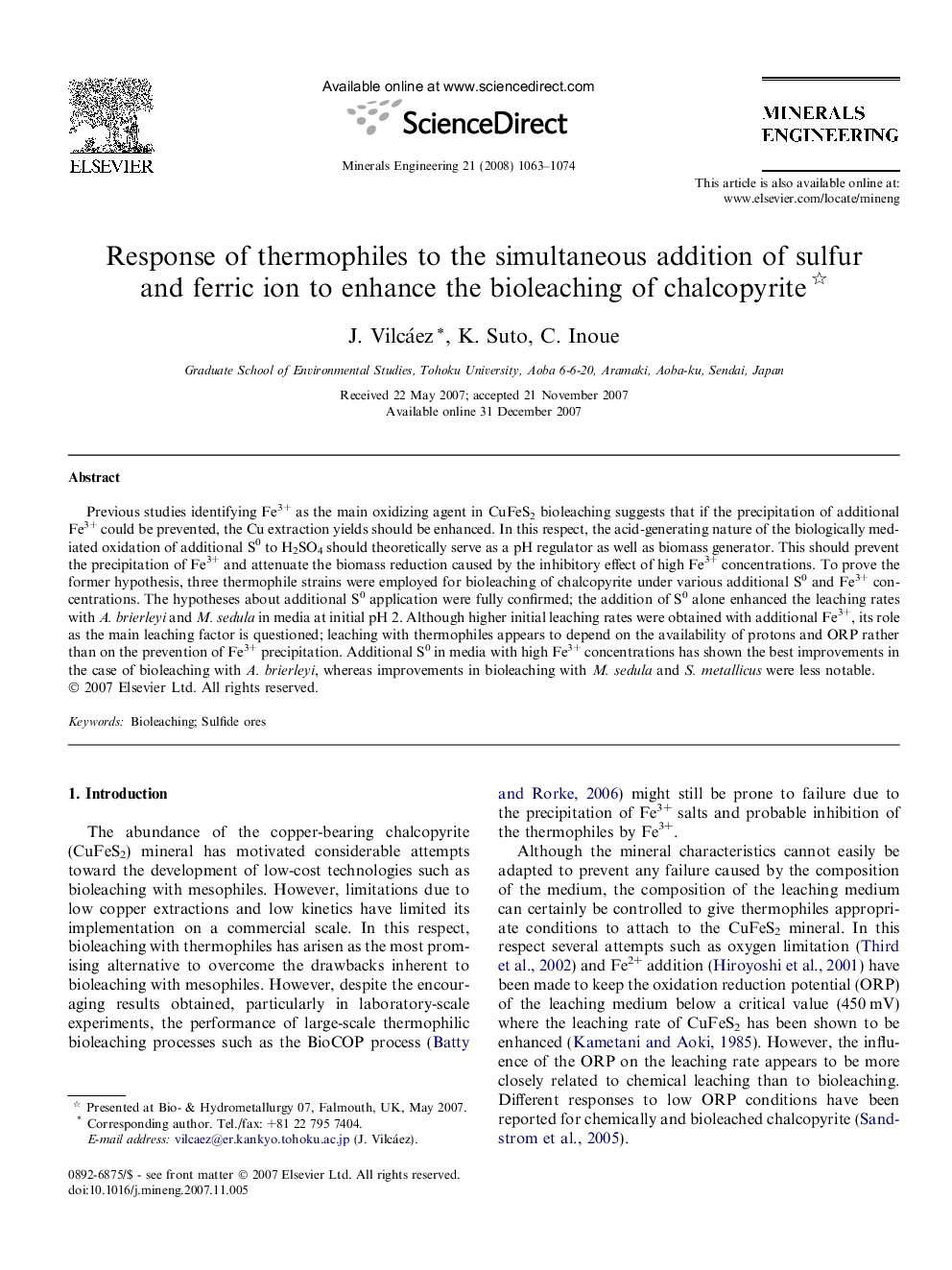| Article ID | Journal | Published Year | Pages | File Type |
|---|---|---|---|---|
| 234522 | Minerals Engineering | 2008 | 12 Pages |
Previous studies identifying Fe3+ as the main oxidizing agent in CuFeS2 bioleaching suggests that if the precipitation of additional Fe3+ could be prevented, the Cu extraction yields should be enhanced. In this respect, the acid-generating nature of the biologically mediated oxidation of additional S0 to H2SO4 should theoretically serve as a pH regulator as well as biomass generator. This should prevent the precipitation of Fe3+ and attenuate the biomass reduction caused by the inhibitory effect of high Fe3+ concentrations. To prove the former hypothesis, three thermophile strains were employed for bioleaching of chalcopyrite under various additional S0 and Fe3+ concentrations. The hypotheses about additional S0 application were fully confirmed; the addition of S0 alone enhanced the leaching rates with A. brierleyi and M. sedula in media at initial pH 2. Although higher initial leaching rates were obtained with additional Fe3+, its role as the main leaching factor is questioned; leaching with thermophiles appears to depend on the availability of protons and ORP rather than on the prevention of Fe3+ precipitation. Additional S0 in media with high Fe3+ concentrations has shown the best improvements in the case of bioleaching with A. brierleyi, whereas improvements in bioleaching with M. sedula and S. metallicus were less notable.
